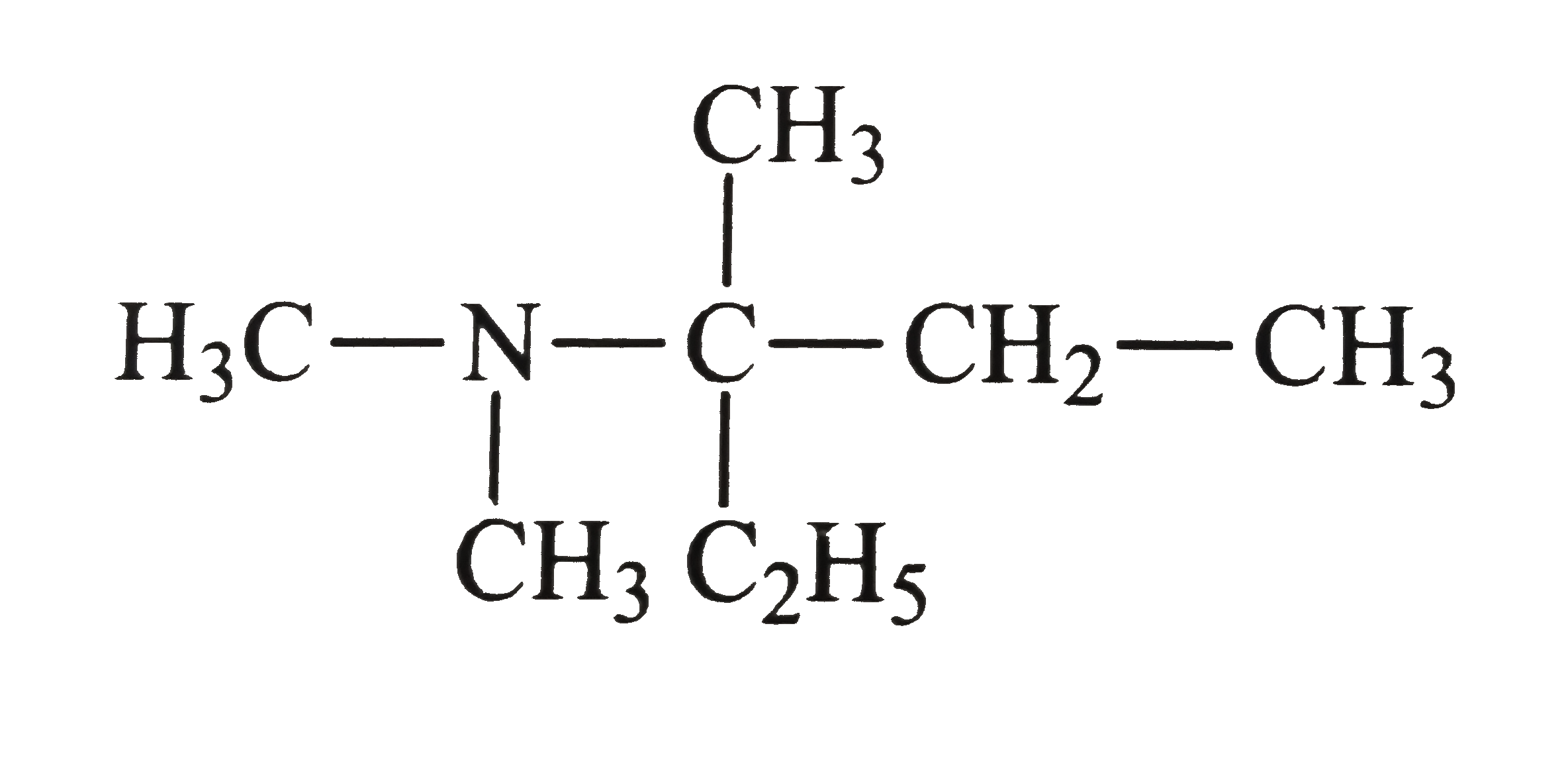Give the IUPAC names of the following compound [Ag(NH3)2]Cl
To determine the IUPAC name of the compound (Ag(NH3)2)Cl, we will follow a systematic approach.
1. Identify the Coordination Entity:
The coordination entity in the compound is (Ag(NH3)2)+. Here, silver (Ag) is the central metal atom, and ammonia (NH₃) is the ligand.
2. Determine the Oxidation State of Silver:
Let the oxidation state of silver be X. The ammonia ligands are neutral (charge = 0). The overall charge of the coordination complex is +1 (since it is paired with the chloride ion, which has a -1 charge).
X+2(0)=+1⟹X=+1
Therefore, silver is in the +1 oxidation state.
3. Name the Ligands:
The ligand ammonia is named "ammine" in coordination chemistry. Since there are two ammonia molecules, we use the prefix "di" to indicate the number of ligands. Thus, "diammine" is the name for NH3 when there are two of them.
4. Name the Central Metal:
The name of the metal silver in Latin is "Argentum". Since silver is in the +1 oxidation state, we denote this by adding "I" after the name of the metal. Therefore, silver in +1 oxidation state is named "silver(I)" or "argentum(I)".
5. Combine the Names:
The name of the coordination complex is formed by combining the ligand name and the metal name. Thus, we have:
diammine silver(I)
6. Name the Anion:
The anion present in the compound is chloride, which remains as "chloride".
7. Combine the Coordination Complex Name with the Anion:
The final IUPAC name is formed by combining the name of the coordination complex and the anion. The anion is written as a suffix:
diammine silver(I) chloride
Final Answer:
The IUPAC name of the compound (Ag(NH3)2)Cl is diammine silver(I) chloride.
The coordination entity in the compound is (Ag(NH3)2)+. Here, silver (Ag) is the central metal atom, and ammonia (NH₃) is the ligand.
Let the oxidation state of silver be X. The ammonia ligands are neutral (charge = 0). The overall charge of the coordination complex is +1 (since it is paired with the chloride ion, which has a -1 charge).
X+2(0)=+1⟹X=+1
Therefore, silver is in the +1 oxidation state.
The ligand ammonia is named "ammine" in coordination chemistry. Since there are two ammonia molecules, we use the prefix "di" to indicate the number of ligands. Thus, "diammine" is the name for NH3 when there are two of them.
The name of the metal silver in Latin is "Argentum". Since silver is in the +1 oxidation state, we denote this by adding "I" after the name of the metal. Therefore, silver in +1 oxidation state is named "silver(I)" or "argentum(I)".
The name of the coordination complex is formed by combining the ligand name and the metal name. Thus, we have:
diammine silver(I)
The anion present in the compound is chloride, which remains as "chloride".
The final IUPAC name is formed by combining the name of the coordination complex and the anion. The anion is written as a suffix:
diammine silver(I) chloride
The IUPAC name of the compound (Ag(NH3)2)Cl is diammine silver(I) chloride.
Topper's Solved these Questions
- COORDINATION COMPOUNDS BOOK - ICSECHAPTER - COORDINATION COMPOUNDS EXERCISE - EXERCISE (PART - I OBJECTIVE QUESTIONS)
22 Videos
- COORDINATION COMPOUNDS BOOK - ICSECHAPTER - COORDINATION COMPOUNDS EXERCISE - EXERCISE (PART - I OBJECTIVE QUESTIONS) (Multiple Choice Questions)
30 Videos
- COORDINATION COMPOUNDS BOOK - ICSECHAPTER - COORDINATION COMPOUNDS EXERCISE - ISC EXAMINATION QUESTION (PART- II DESCRIPTIVE QUESTIONS)
39 Videos
- CHEMISTRY-2020 BOOK - ICSECHAPTER - CHEMISTRY-2020 EXERCISE - Question (Answer the following question)
4 Videos
- d- AND- f- BLOCK ELEMENTSBOOK - ICSECHAPTER - d- AND- f- BLOCK ELEMENTSEXERCISE - ISC EXAMINATION QUESTIONS (PART-II)(DESCRIPTIVE QUESTIONS)
15 Videos
Similar Questions
Give the IUPAC name of the following compound:

View SolutionGive the IUPAC name of the following compound.

View SolutionGive the IUPAC name of the following compounds
View SolutionGive the IUPAC name of the following compound.

View SolutionGive the IUPAC name of the following compound :

View SolutionGive the IUPAC names of the following compounds :

View SolutionGive the IUPAC names of the following compounds :

View SolutionGive the IUPAC names of the following compounds :

View SolutionGive the IUPAC names of the following compounds :

View SolutionGive the IUPAC names of the following compounds :

View Solution
